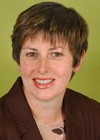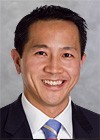Electoral Form Guide: Chisholm
Electorate: Chisholm
Margin: Labor 7.4%
Location: Eastern Melbourne, Victoria
In a nutshell: Once a tight marginal seat, Labor has strengthened its hold on Chisholm since Howard government Health Minister Michael Wooldridge abandoned the seat in 1998 for the bluer pastures of Casey. Anna Burke has held the seat for Labor ever since.
The candidates
|
|
PHIL GOODMAN
|
|
|
Electorate analysis: Chisholm covers suburbs in the electorally crucial south-east of Melbourne, balancing Liberal-voting Mont Albert and Box Hill in the north against strongly Labor Chadstone, Oakleigh and Clayton in the south. It no longer contains any of the territory it covered when created in 1949, when it was based on Camberwell and Glen Iris to the west. These areas today make neighbouring Higgins a safe seat for the Liberals. A heavy swing to Labor candidate Helen Mayer in 1980 made them competitive in Chisholm for the first time, and she finished the job on her third run at the seat in 1983. Mayer came within 191 votes of defeat at the 1984 election, when the new Senate voting system caused a spike in the informal vote. The gentlest of swings brought it back to the Liberal fold in 1987, the new member being future Howard government Health Minister Michael Wooldridge. Many thought Wooldridge to be in danger when a redistribution shaved 2.5 per cent from his margin going into the 1996 election, but the electoral tide was running a different direction that year.
Wooldridge moved on to the greener pastures of Casey in 1998, and Chisholm fell to Labor with a 4.7 per cent swing. After swinging hardly at all in 2001 and 2004, there was a 4.7 per cent shift to Labor in 2007. The member since 1998 has been Anna Burke, an industrial officer with the Finance Sector Union aligned with the Right sub-faction associated with the Shop Distributive and Allied Employees Association.
Analysis written by William Bowe. Read Bowe’s blog, The Poll Bludger.



